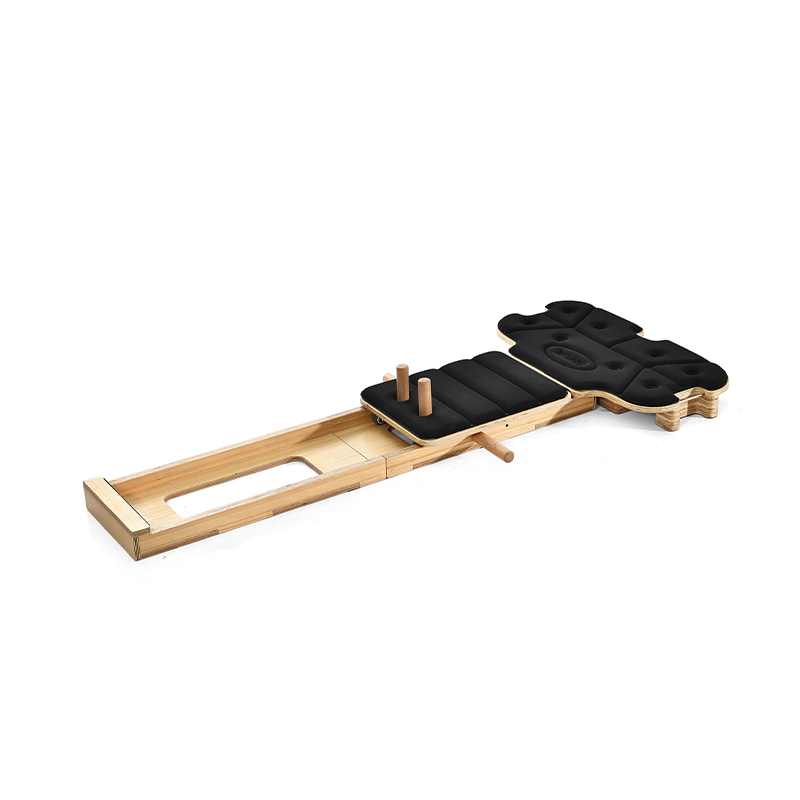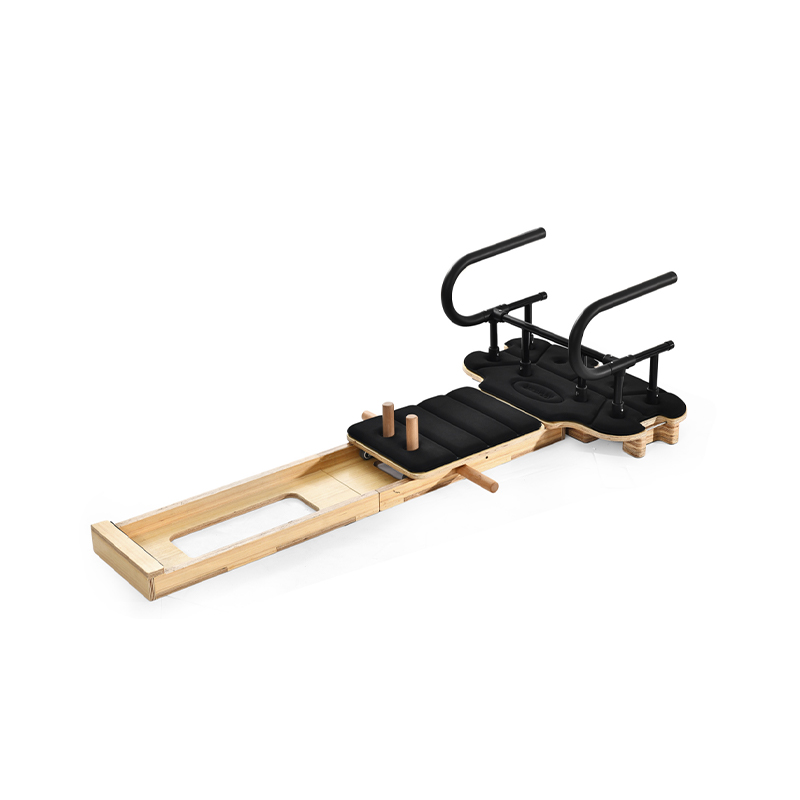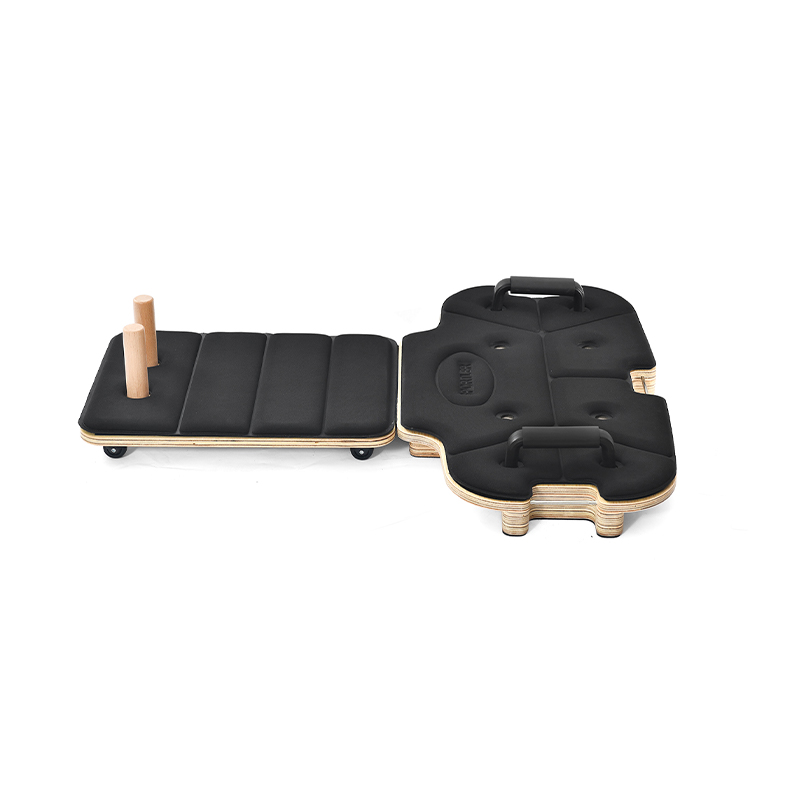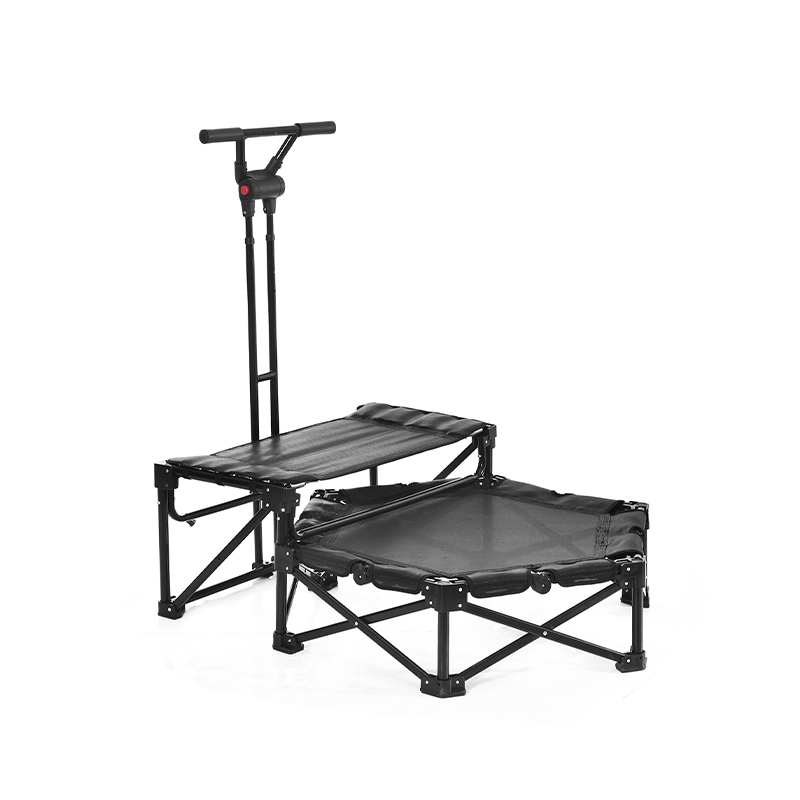The indoor home recumbent static fitness trampoline offers a unique and gentle way to engage in cardiovascular exercise and balance training within the comfort of one’s living space. Combining the benefits of low-impact movement with stability support, this type of trampoline is designed to accommodate users who prefer seated or supported workouts, making it suitable for individuals of varying fitness levels, including those with mobility limitations.
Unlike traditional trampolines that require standing and dynamic jumping, the recumbent static fitness trampoline incorporates a seated or reclined position, providing a more controlled and stable environment. This design reduces stress on the joints and lowers the risk of injury while still promoting circulation, muscle engagement, and cardiovascular health. Users can perform gentle bouncing or leg movements while remaining safely supported, making it a good option for rehabilitation or low-impact fitness routines.
The static feature indicates that the trampoline is stationary and does not involve continuous jumping or high-intensity bouncing. Instead, users can focus on controlled, rhythmic movements, enhancing coordination and stability. The padded seating or backrest adds comfort and support, encouraging longer workout sessions without fatigue or discomfort.
This fitness equipment is ideal for home use due to its compact footprint and user-friendly setup. Many models are foldable or easily stored when not in use, making them suitable for apartments or homes with limited space. The quiet operation also allows for workouts at any time without disturbing others in the household.
Cardiovascular benefits from using a recumbent static trampoline come from the mild repetitive movements that stimulate blood flow and elevate the heart rate moderately. This form of exercise can support endurance and energy levels without the impact stress associated with running or jumping on hard surfaces. Over time, consistent use may contribute to improved cardiovascular function and overall stamina.
Balance and coordination improvements are additional benefits, as users engage core and stabilizing muscles to maintain posture during seated bouncing or leg lifts. This can help reduce the risk of falls and improve motor control, which is especially beneficial for older adults or those recovering from injury.
Safety considerations are integral to the design of indoor recumbent trampolines. Features such as non-slip feet, sturdy frames, and padded supports help ensure stability during exercise. Users should adjust resistance or intensity gradually and consult with healthcare professionals if using the equipment for rehabilitation purposes.
Maintenance for the recumbent static trampoline typically involves wiping down the surfaces to keep the equipment clean and inspecting for wear or loose parts. Ensuring the trampoline is stored in a dry area protects the materials and maintains longevity.
In addition to fitness benefits, some users find the trampoline helpful for relaxation and stress relief. The gentle motion can provide a soothing effect, promoting mental well-being alongside physical health.
Overall, the indoor home recumbent static fitness trampoline serves as a practical tool for those seeking a gentle, low-impact form of exercise that supports cardiovascular health, balance, and muscle engagement. Its design adapts well to varied user needs, promoting consistent activity without requiring high intensity or complex movements.


 English
English русский
русский Español
Español







